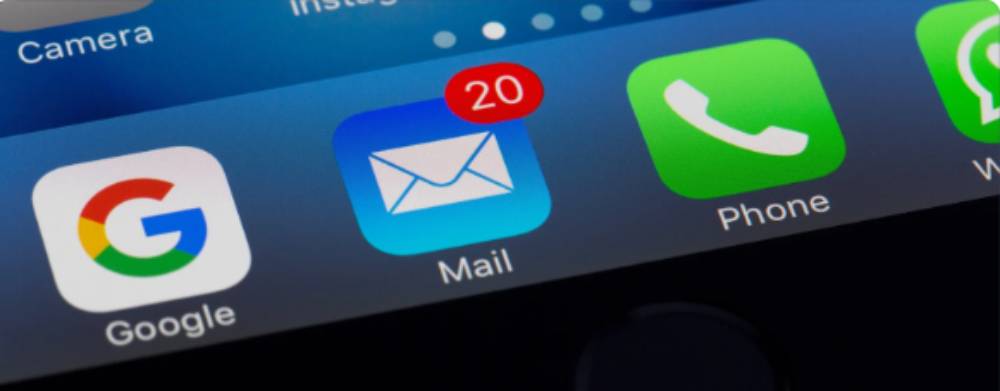Creating effective email marketing campaigns within a limited timeframe requires strategic planning and efficient implementation. With proper management and resources, it is possible to create exceptional emails.
In this article, we covers the basics of email marketing, providing you with the knowledge to effectively connect with your audience and improve your chances of success.
- Finding agreement with stakeholders on objectives for your email marketing campaigns.
- Creating email designs that are uncomplicated and can be easily modified.
- The tasks involved in this job include writing, editing, and formatting email copy.
- Make sure you have established unsubscribe groups.
- Determining the most effective time to send your email marketing campaigns.
- The measurement of recipient engagement and other significant metrics.
Understanding the process and workflow of creating successful email marketing campaigns may involve several steps, but with practice, future campaigns will become easier to handle.

What is email marketing?
Email marketing is a type of digital marketing. It involves sending promotional messages or newsletters via email. The goal is to build customer relationships, promote products or services, increase brand awareness, and drive sales. Email marketing allows for direct communication and personalized content. It is cost-effective, measurable, and provides valuable data for analysis. Marketers have been using email as a channel for a long time. The first marketing email was sent in 1978 and generated $13 million in sales.
Email is a powerful marketing channel that has been widely used for a long time. It’s flexible and cost-effective, allowing you reach a large audience quickly. Plus, you can personalize your messages and generate leads. Email marketing comes in various forms, such as announcing new content, sending regular newsletters, or updating customers about products. While newer channels may seem more exciting, email still delivers results and helps you build a loyal audience. “What I love about email marketing is its intimacy,” says Rob Litterst, head of strategy and operations for HubSpot’s Newsletter Network.

How Does Email Marketing Work?
Email marketing often utilizes automation as a key component. The most common approach involves creating a calendar and developing content that aligns with it.
Afterwards, the company utilizes tools to generate triggers that initiate specific actions and send the appropriate message at the optimal time.
For instance, if your company specializes in shoe sales, there is an excellent ebook available that covers various shoe models and their appropriate usage.
The lead provides their email address in order to access the content, which serves as a trigger.
When activated, the automated tool promptly sends them the link for the ebook as well as an additional article on pairing shoes with appropriate socks.
One week later, you inquire about their reading progress and provide additional information.
Alternatively, one could discuss the distinguishing features of their shoes compared to other brands, such as their versatility and ability to complement various styles.
Email has the ability to create connections and relationships, making it a powerful marketing channel.
Direct communication and consistency are two important factors for a successful advertising campaign.
The example provided demonstrates how it can enhance brand awareness and increase sales.
The Importance of an Email Marketing Strategy
Nearly everybody has an email
And let me assure you, this is not mere speculation.
Did you know that a whopping 90% of Americans are hooked on email? And get this, they can’t resist the urge to check their inboxes every single day!

Email Marketing ROI is better
Email marketing begins with an advantage in marketing because if you have the lead’s email, they are already engaged in a buyer’s journey towards you.
Based on this information, it can be concluded that email provides a higher return on investment compared to other types of advertising and marketing.
A well-executed strategy can result in a higher conversion rate compared to paid ads or other broad lead generation methods.
Emails are cheap
It is important to consider costs as well.
As previously mentioned, automation is a significant factor in the implementation of email marketing. Once it is configured and prepared for deployment, the campaign operates with minimal human intervention.
The expenses incurred will be limited to tools and services necessary for the operation, while human effort will be dedicated to analyzing KPIs and refining the message.
One can efficiently plan a strategy that utilizes automation to operate round the clock, in a cost-effective and highly efficient manner.
This channel has the ability to reach nearly all of your leads and client base.
Types of Marketing Emails
Different types of marketing emails offer various options for effectively connecting with your contacts at the appropriate times.
Here are some important email marketing examples that every marketer should be familiar with.

Newsletters
If you operate a business blog, online publication, or any other type of site that regularly updates content, a newsletter is essential.
Newsletters are currently experiencing a resurgence and can be effective in ensuring that your readers do not miss out on your most crucial content.
Announcements
Discover the secret behind why people can’t resist signing up for your email advertising updates.
They are eager to keep up with all the amazing things you’re up to, so don’t be shy about sharing exciting news and updates!
These can include information about new products or important updates to existing ones, particularly those that a recipient may have bought or shown interest in.
Dedicated Sends
While it’s totally cool and all for you send out mass emails, why not spice things up and send targeted messages that make your customers go “wow!”
This strategy allows you to add a personal touch to your email marketing game, while also building relationships with potential customers at every stage of their journey.
Confirmation Emails
Not receiving a confirmation email after completing an online transaction can be frustrating.
Confirmation and “thank you” emails play a crucial role in email marketing as they ensure customers receive accurate transaction information and minimize any potential confusion.

How to Start an Email Marketing Strategy
A successful email marketing strategy involves careful planning and organization.
Let’s outline the steps you should follow to ensure a positive response from the audience starting from the first email.
1. Start with your goals
In order to create a successful marketing campaign, it is important to have a clear understanding of the desired outcome.
Now, let’s start with some realistic yet ambitious goals.
What is your main goal? Do you want to convert more leads? Do you want to create brand awareness? Or do you want to focus on brand loyalty?
Typically, working on all of these points concurrently is possible. However, each one requires its own plan and methods for gauging success.

2. Create content
One consideration regarding email strategy is the importance of having content prepared in advance.
It covers needs, expectations, and doubts at all stages of the Digital Marketing funnel, although not necessarily all of them.
It is important for your emails to be consistent with your buyer persona. They should have a similar voice and style and effectively communicate in a way that is familiar to your audience.
It is important to note that a connection must be established.
Writing emails for a campaign requires the inclusion of conversations, information, updates, and system messages, which can be a complex task in terms of elaboration and formatting.
3. Setup your triggers
After preparing the content, the next step involves anticipating the audience’s actions and organizing the structure accordingly.
Triggers are conditions that prompt action.
When a user visits a store page for sneakers while logged in, the software will automatically send them an email the following day with a discount for those sneakers.
If the store is not visited for a month, an email can be sent to notify about new models and offer promotions. A trigger can be based on either action or time.
Understanding your buyer persona is crucial because it allows you to comprehend their response to stimuli, their content engagement, and their buying motivations.
The triggers are essential for your strategy as email marketing lacks effectiveness without automation. Just imagine having to send them manually!

4. Build your mailing list
Typically, an email marketing address list begins with the existing ones obtained from login information.
One of the key components of this strategy involves acquiring new and up-to-date addresses to establish and maintain relationships.
One effective method is to provide something in return for contact information.
Discover the enchanting power of irresistible content! Immerse yourself in a treasure trove of captivating ebooks, enlightening webinars, and invaluable tutorials that will entice individuals to willingly unveil their innermost secrets to you.
Build your list organically by finding people who want to be contacted by you. Never buy an email marketing list.
5. Segment your mailing list
If done correctly, your company will have a large number of email addresses to use for the automated marketing campaign.
However, it is important to consider the individual preferences and interests of each recipient before sending them the same content.
Some leads are still in the discovery stage. They are unsure of what they want. Others are close to making a buying decision. Some clients are searching for a new discount.
To make your list more exciting, get ready to create segments that lead to different paths and triggers for each one!
Unleash the incredible power of strategic content distribution and watch your message soar with unrivaled precision!

6. Know the dos and don’ts
To start a successful email marketing campaign, all you need is a list, a structure, content, and goals.
We would like to provide you with some helpful tips to improve your work. Take note of what you should do and what you should avoid.
First, we will begin with the dos:
- It is recommended to include a reward in each email, such as an interesting article or a discount coupon.
- Maintain a consistent presence to ensure the brand is always remembered.
- Creating a newsletter can enhance your strategy and foster stronger connections.
- Please continue with the emails to keep the anticipation going for the next one.
- It is important to consistently fulfill your commitments.
Here are some things to avoid:
- Avoid being a nuisance, both in the content you share and how often you share it.
- Please ensure that emails are not sent without proper authorization.
- It is not recommended to purchase email lists as they may increase your reach but are unlikely to result in conversions.
- It is important to always be honest and transparent with your leads, avoiding any misleading messages.
7. Conduct A/B testing for email marketing
A/B testing, also known as split testing, is a valuable tool in refining email marketing strategies, particularly when it comes to the finer details such as wording and formatting.
A/B testing is a method where multiple versions of the same email are sent out to determine which approach performs better. Marketers may choose to test various elements such as:
- Various subject lines or approaches to the actual content.
- There are different CTA styles available.
- Please provide the schedules for various types of explosions.
- Various techniques can be used to include links.
- The sentence above mentions the use of emoji, graphics, moving visuals, and other multimedia elements.
For accurate results in A/B testing, it is recommended to focus on one component at a time in order to determine the factors that affect your outcomes.

How to Write a Marketing Email
It is important to understand the concept and significance of email marketing, as well as create an engaging email that encourages recipients to take action.
Here are some tips from experts to keep in mind.
1. Write subject lines that are clear first and catchy second
Many email marketers recognize the significance of making their emails distinct and capturing the attention of recipients.
However, it is important to prioritize clarity and simplicity over catchy phrases.
Having subject lines that provide recipients with a clear understanding of the email’s content is crucial for successful email marketing.
One may consider making adjustments to generate interest.
2. Ensure your copy delivers on your subject line’s promise
A subject line should inform the reader and make a commitment to deliver.
The copy should fulfill its intended purpose, whether it be to entertain, inform, inspire, or something else entirely.
This extends beyond ensuring responsible email advertising practices.
When individuals open a marketing email and do not receive the promised content, click-through rates significantly decline. As a result, the email loses its intended purpose.
3. Use the second person when writing copy
Readers tend be more receptive towards marketing material that doesn’t come across as promotional.
Customers also appreciate feeling a personal connection with the brands they purchase from. Using second person in your email copy achieves both of these objectives effectively.
Using an excessive amount of third person pronouns in a marketing email can create a disconnect between the sender and the reader, while an overuse of first person pronouns can shift the focus solely onto the sender.
However, the use of the second person brings the focus back to the reader, where it will have the most impact.
4. Establish relevancy early
Your readers are busy individuals, so it is important to not waste their time once you have captured their attention.
Effective email marketing begins by addressing the reader’s interests and providing them with relevant information.
The email conveys information about the content and purpose of the message and highlights its relevance to the reader.
Begin with that statement, then provide any other relevant details before concluding with a clear and compelling call-to-action.
5. Create benefit-oriented copy
As the brand sending the email, you understand the potential benefits for your reader if they choose to open, read, and engage with your content.
The purpose of your copy is to effectively communicate value and encourage readers to click through after they finish reading.
Many brands try to accomplish this by outlining the features associated with their offer, informing the reader about what they will receive, such as a discount, a special offer, or access to an upgrade
However, they do not provide a justification for their preference.
Ultimately, consumers prioritize experiences, benefits, and lifestyle perks over products when making purchases.
By highlighting the advantages of a product in your email marketing copy, you indicate to the reader the potential positive effects it could have on their life if they choose to act.
6. Keep it brief
Consider the most recent instance when you accessed a marketing email from a brand that you either purchase from or have otherwise displayed interest in.
Many individuals tend to read text quickly instead of thoroughly.
When composing your emails, it is important to consider that your readers prefer concise and focused content. It is best to avoid writing overly long paragraphs.
It is recommended to create concise content that includes key points and prioritizes easily scannable information.
Otherwise, there is a possibility of confusing or frustrating the reader to the point where they may not click through on your offer.
7. Infuse your personality into your email
Effective marketing emails should be concise, informative, and convey a sense of warmth, friendliness, and individuality.
Being approachable and friendly can facilitate readers in establishing a personal connection with your brand, which can potentially lead to increased interaction.
Today’s consumers tend to favor brands that exhibit characteristics similar to those of friends, including their actions, communication, and overall feel.
Make your brand more relatable by incorporating humor, slang, and other informal elements into your messages, similar to how you would communicate with a close friend or loved one.
8. Choose your call-to-action language carefully
Marketing emails should always have a clear objective, with a specific action you want the reader to take after reading the information you have provided.
The closing call-to-action should effectively communicate the desired action.
Use clear and actionable language in your call-to-action. Ensure it is easily noticeable so that individuals who skim your email can easily find it. Incorporating eye-catching design elements, such as clickable buttons, is an effective way to accomplish this.
Using graphics and images in emails can enhance visual appeal and help readers focus on important information, but it’s important to avoid relying too much on them.
Some email clients may not display images correctly or at all, so it is important for your messages to be easily readable without them.
9. Create eye-catching and responsive emails
According to estimates, the average person receives between 40 and 120 emails per day in 2023. With such a high volume, it’s important to make your emails stand out if you want to grab people’s attention.
The focus should be on creating mail that is innovative and dynamic, which can attract people’s attention and generate curiosity. Some tips for accomplishing this include:
- Incorporating visuals such as videos, graphics, and similar elements can help to break up the text.
- Customizing emails to enhance personal connections and foster warmth.
- Compose subject lines that are attention-grabbing and also emphasize the email’s content.
- Make sure that all elements of your message align with your brand identity, including factors like humor, colors, fonts, and wording.
It is important for your emails to be fully responsive so that recipients can easily read them on different devices. Make sure all visual elements load properly and appear visually appealing before finalizing your email blasts.

9 of the Best Email Marketing Tools
It is evident that technology plays a significant role in email marketing.
Automation, intelligence, and data analysis are necessary for the creation and improvement of campaigns.
To ensure informed decision-making, it is important to select products and services that incorporate content creation, strategic planning, and performance monitoring.
Please consider evaluating the tools currently available in the market.
1. Mailchimp
Mailchimp is a popular email marketing platform that offers free plans for users with small email lists.
The software has multiple uses, such as email management, content creation, email layout design, trigger setting, message segmentation, and result analysis.
2. Constant Contact
Constant Contact is a platform that assists small businesses in creating effective email marketing campaigns at an affordable cost.
When we refer to the term “low”, we are indicating a cost of $20 per month for unlimited emails, customizable templates, mobile responsive layouts, and a user-friendly interface for planning, producing, and measuring.
3. Keap
Keap is a service that provides a structure for email marketing that can be used by any company as a sales and CRM tool.
The platform enables users to program campaigns and automate customer relationships.
It is an effective method of combining marketing and sales into a successful strategy.
4. Sendinblue
Sendinblue is a popular choice for small businesses looking for email marketing software.
It is suitable for launching and managing simpler campaigns on a smaller scale. Additionally, it includes all the necessary features to ensure the success of your campaigns.
It is recommended to explore different communication options like live chat and SMS support.
5. HubSpot
If you are interested in email marketing services that utilize customer relationship management data (CRM), it is recommended to consider HubSpot.
The HubSpot interface is designed to make creating attractive, personalized emails a straightforward process.
Users will have access to various options that can help streamline the campaign optimization process, including A/B testing, comprehensive reporting, and additional features.
6. Drip
Drip is a reliable choice for e-commerce marketers seeking to enhance their email marketing efforts without unnecessary complexity.
The interface is designed to simplify the process of segmentation, personalization, and data analysis.
The user-friendly design of the eCommerce program enables professionals to focus on customer connections rather than dealing with program usability issues.
7. ConvertKit
For those seeking a cost-effective and efficient email marketing solution for creatives, it is recommended to explore ConvertKit.
For a monthly fee of $15 (or $9 per month with an annual plan), you can access a comprehensive marketing software that simplifies email sending, assists in creating landing pages, marketing products, and more.
8. MailerLite
MailerLite is an email marketing solution that has a monthly cost of $10, or $7 per month if you choose an annual plan, making it a cost-effective option.
This is suitable for businesses and companies of all sizes, ranging from startups to large enterprises.
The editors are user-friendly, have solid deliverability, provide intuitive analytics, and offer multiple features, making it an excellent fit for solopreneurs and creatives as well.
9. GetResponse
For business owners or those handling email marketing for small to mid-sized enterprises, GetResponse is worth considering. The pricing options vary, from $0 for up to 500 contacts to just under $100 per month for a comprehensive e-commerce package, making it a cost-effective option.
Furthermore, it provides a range of user-friendly features that enhance customization options for emails and other messaging. These features include autoresponders, AI-powered email generators, SMS marketing support, e-commerce support, and other functionalities.
7 Email Marketing Metrics to Keep an Eye on

Now that we have discussed the planning and tools for an email marketing campaign, it is essential to address the crucial process that ensures success during its execution.
Metrics and measuring performance are important as they provide data from emails for making improvements in layouts, language, and triggers.
Here are the 7 most relevant metrics that should be consistently monitored.
1. Open rate
The open rate is calculated by dividing the number of recipients who opened the email by the total number of emails sent.
A low open rate metric suggests that the subject lines may not be engaging or that the mailing list needs better segmentation.
2. Bounce rate
Email bouncing occurs when a message is sent from the server but fails to reach the intended recipient.
Bounces can occur due to temporary issues (soft bounce) or if the email address is invalid or does not exist (hard bounce).
If the bounce rate is excessively high, it is advisable to review your email list.
There could be an issue with the lead gathering process or a potential performance problem with your email marketing solution.
3. Click-through rate
CTR is a significant metric for measuring the success of your marketing campaign.
The email click-through rate is determined by the percentage of recipients who not only open the email but also click on one or more links within the content.
A low performance here may suggest that the message lacks clarity or fails to engage the audience effectively.
The development of CTAs can be influenced by various factors, including objectivity, engagement, and persuasion, which can impact their effectiveness.
4. Conversion rate
Conversion encompasses more than just click-through rates, but it does not necessarily pertain to making a purchase in this particular context.
It pertains to the percentage of individuals who have completed the intended action in each email. This action could include reading and responding to an article, filling out a form, or making a purchase.
Setting goals for each message is important in order to track its efficiency in moving a lead forward.
5. Email forwarding rate
Sometimes, an email may contain important information that individuals may wish to share with their family and friends.
Email marketing tools have the capability to measure and identify the emails that have been forwarded to other recipients. Analyzing and learning from these metrics will assist in enhancing your overall strategies.
6. Unsubscribe rate
If the rate of people unsubscribing or opting out of receiving emails from you increases, it may indicate that your content is not performing well.
Typically, the number increases when content is inconvenient or not useful.
If necessary, it may be a good idea to review your strategy.
7. List growth rate
Sharing, engaging, and converting can contribute to increasing your email list, resulting in more addresses and leads, which can ultimately lead to more sales.
The growth will provide an overview of the company’s performance in its email marketing strategy.
It will also provide insights into the effectiveness of your content in attracting and nurturing new leads.
How to Measure the Results of Email Marketing Campaigns

Understanding the metrics is essential, as numbers hold no intrinsic value on their own.
A good analysis is always a combination of measurement and context.
It is important to consider your target audience, budget, and goals when determining the suitability of your plan and content, regardless of their design and quality.
In order to be successful in the digital age, companies need to gather a significant amount of data and utilize it to make informed decisions. This involves developing top-notch content, adapting triggers, and making investments in lead acquisition.
The results of this campaign are assessed using the return on investment (ROI) metric, which calculates the amount spent to accomplish the desired objectives.
Email Retargeting: Reconnecting With Inactive Subscribers and Boosting Engagement
Individuals on your email list may receive a significant volume of emails on a daily basis, thus reducing the likelihood of reading all of the messages. Consequently, marketing emails frequently go unnoticed.
Every brand faces the challenge of inactive subscribers and requires effective strategies to engage them again. Here are some suggestions to consider.

Revisit your send times
According to Campaign Monitor, Mondays have the highest average email open rates, while Sundays have the lowest. It is important to compare these statistics with your own data and consider that recipients are more likely to check fresh emails.
Offer special deals and incentives
Offering inactive subscribers something extra can be an effective way to re-engage with them and encourage their continued participation.
Ensure your list is properly segmented
When an email is relevant to a recipient’s interests or life circumstances, they are more likely to want to engage with the sender further. If engagement is low overall, it may be necessary to review segmentation methods.
Offer an unsubscribe option
Asking customers if they would like to stay on a mailing list can be an effective way to reactivate them, as it reminds them of their initial subscription.
Email Campaign Case Studies: Real-Life Examples of Successful Email Marketing Strategies
Wok to Walk
Wok to Walk is a U.S.-based food company that focuses on healthy options made with local ingredients. They were able to increase their email open rate by more than 18 percent by updating their subject lines to include a phone number, which resulted in increased engagement from their target audience.
Mad Tasty
Mad Tasty, a beverage company that specializes in hemp products, successfully adapted during the pandemic by implementing new strategies. They shifted their focus from offline sales to online purchasing, using email marketing to encourage customers to make the switch.
Digital Marketer
Digital Marketer, a marketing blog, demonstrated the significance of using effective subject lines by increasing their open rates threefold. They achieved this by using subject lines that offered subscribers valuable and exclusive tips and techniques, indicating that modern consumers are responsive to helpful content.
Email Marketing Trends for 2023: Emerging Strategies and Techniques to Stay Ahead
Leveraging user-generated content
Social proof has a significant impact on consumers’ purchasing decisions, as they often rely on the trust of other consumers. To increase engagement, numerous marketers are incorporating user-generated content into their marketing emails.
AI-powered data analysis
AI-powered technology is being used to analyze customer data and behavior patterns, allowing marketers to gain valuable insights about their subscribers and optimize the effectiveness of their email strategies.
Dynamic interactive experiences
In recent years, there has been an increase in the use of interactivity in marketing. Starting in 2023, email marketing has begun incorporating this trend, enabling customers to actively engage in surveys, rate services, add items to carts, and participate in other activities directly within the email.
Wrap Up
Email marketing is an effective tool for driving sales and revenue for businesses, with a greater reach and return on investment compared to other marketing channels.
To achieve success with your email marketing campaigns, follow the steps outlined in this guide.
FAQs:
What are the benefits of email marketing?
Email marketing is a commonly used marketing strategy by businesses to increase their reach, drive sales, recover abandoned carts, and cultivate customer relationships. Furthermore, it is a cost-efficient marketing approach.
How do I build an email list?
One way to increase your email list is by offering a downloadable asset, hosting a giveaway, or providing a free email course. Another effective strategy is to place a banner at the top of your website to collect email addresses.
What email marketing regulations are there?
Both CAN-SPAM and GDPR regulations require the protection of user privacy and prohibit the use of purchased lists for email marketing.
What is email automation?
Email automation enables the creation of intricate email campaigns that send out automatic emails based on specific actions, such as when a subscriber adds an item to their cart or downloads an asset.
How do I segment my email list?
Please utilize the email tool provided to categorize subscribers according to demographics, interests, and customer status. Subsequently, dispatch personalized messages corresponding to each specific segment.





